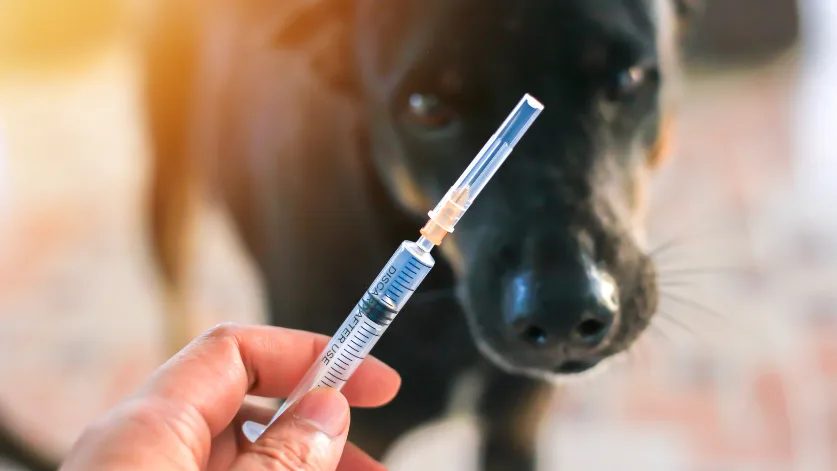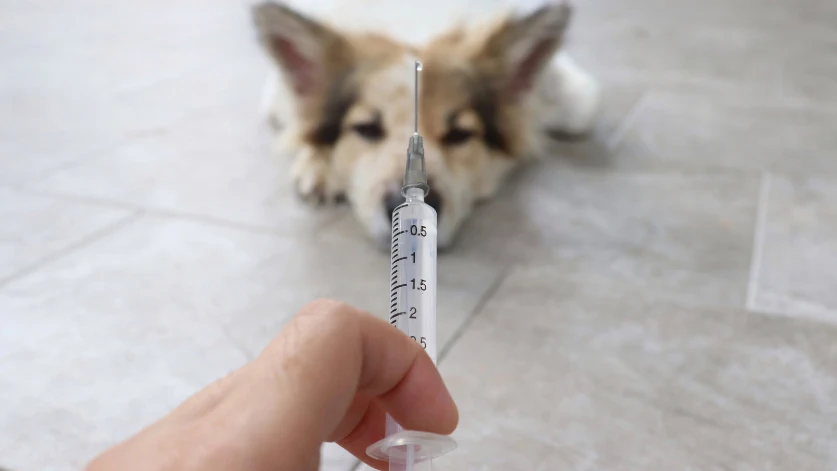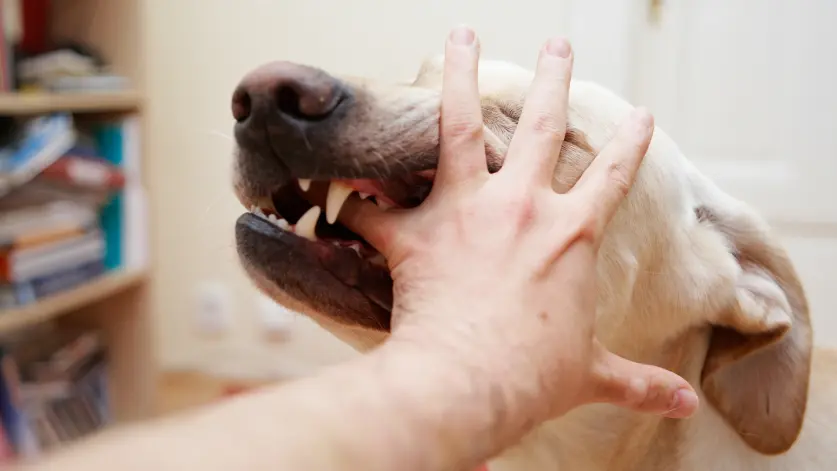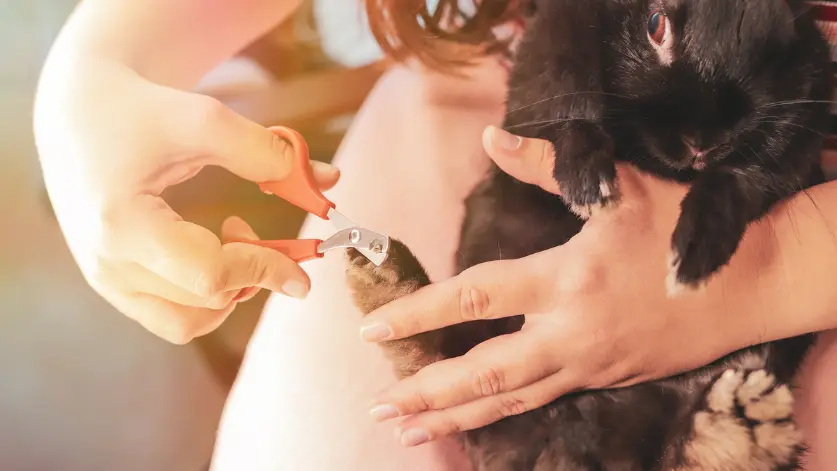
Discover compassionate options in our comprehensive guide on ‘How to Euthanize a Dog with over the counter drugs. Understand what you need, the process, with the priority being your pet’s comfort and dignity. Firstly, I’d like to emphasize that it’s critically important to consult a licensed veterinarian before considering home euthanasia for your dog. In many places, unauthorized home euthanasia is illegal and could result in criminal charges. Plus, even over-the-counter medicines can cause prolonged, unnecessary pain if administered incorrectly. Please always seek professional advice when it comes to such a serious decision.
If you decide to proceed under the guidance of a professional, here’s a list of potential steps:
- Prepare mentally and emotionally—this is a very difficult decision.
- If under professional advice, obtain the necessary over-the-counter medication based on the vet’s recommendation.
- Create a peaceful environment to calm your pet down.
- Administer the drug under the watchful eye of the vet or under their guidance if home administration has been permitted. They will guide you in the correct direction.
- Please wait for the medication to take effect; it may not be instant. Patience is required.
- Comfort your dog during this time, reassure them with soft words and tender touches. Please do what you can to make their departure as peaceful & painless as possible.
- Seek any required follow-ups or care from the professional, ensuring everything has gone as planned.
- Allow yourself to grieve—losing a pet is like losing a family member. Seek support if necessary. Pet bereavement counseling services are widely available.
Understanding the Process of euthanizing a dog with over the counter drugs
Understanding the Process of euthanizing a dog with over-the-counter drugs can be tough, but you must comprehend each sequential move well before you undertake it. Here’s an overview:
- Seek proper guidance: Start the procedure of euthanasia only when suggested and thoroughly guided by the vet.
- Medicine procurement: Once guided, look for the recommended drugs at any pharmacy or vet store.
- Peaceful surroundings: The best thing you can do for your puppy in his last few minutes is make him discomfort-free. Manage to provide a peaceful atmosphere that is silent and serene.
- Drug administration: Based on professional advice, the dose should be given on time and in the correct quantity.
- Patient observation: Certain effects of administering the drug may take time. Observe the pet for any discomfort, and consult with the professional in case of any unexpected response.
- Emotional strength: Handling this tough time for you and your beloved pet can be challenging. Be patient, remain strong for your pet and provide immense love during these last moments.
- Follow-up checks: Post-process, you will need to make sure everything transpired as it should have; your vet will ordinarily make a follow-up to ascertain this. Counseling: Seek counseling if required. After the pet’s demise, channel your emotions and feelings in the right direction to avoid excessive grief. Such assistance can make the grieving process considerably more bearable.
Choosing the Right Drug
Choosing the right drug to help your furry little family member cross the rainbow bridge is a sensitive and hurtful task. The choice ideally needs to be made with your vet to ensure safety and the least discomfort for your pet. Over-the-counter medication largely includes tranquilizers, pain relievers and sedatives, which must be handled cautiously. Here’s a rough blueprint:
- Consult the Vet: Share every detail about your pet’s health with the Vet. Only under their direct advice should you consider options like this because a lot could go wrong.
- Vet-suggested Drugs: Often these are drugs like diphenhydramine, a commonly used animal tranquilizer.
- Safe and Intimate Setting: When the unfortunate time comes to administer the drug, maintain a calm, quiet environment where your pet feels safe and cherished.
- Gentle Application: Administer the drug as kindly and carefully as possible. Several OTC drugs come in capsule or pill form, so ensuring your pet doesn’t suffer any unnecessary stress while swallowing the pill is paramount.
- Observing Effect: Dosage varies from animal to animal and breed to breed. Carefully note any reactions and seek immediate veterinary assistance if you suspect something has gone wrong. It’s important to remember that timing can vary widely as this largely depends on your pet’s weight and overall health. Lastly, Handling Grief: Processing the stage post-euthanasia can be further controlled with proper counseling if you are overwhelmed by the Process. Do not hesitate to reach out for help. Grief is natural and should be honored.
Considerations When Choosing Euthanasia Drugs for a Dog
When considering euthanasia drugs for a dog at home, one should proceed with utmost caution and due consultation with a veterinarian. Here are some pertinent considerations:
- Dog’s overall well-being: A vet should consider your dog’s current state of health before suggesting euthanasia, considering all the potential pain and suffering your pet might endure.
- Correct Strength of Drug: An assortment of drugs, including tranquilizers and sedatives can be used. It’s important to apply the right drug strength resulting in a pain-free departure. In this case, you should rely heavily on professional counsel.
- Delivery of Drug: Many drugs come in pill or liquid form and the delivery method can determine the central contentment of your dog. Make this experience as numerous and devoid of stress for your dog as possible.
- Supervision during Delivery: An around the clock supervision is mandatory right from drug administration to the final. Ensure you have professional vet assistance reachable at all times.
- Coping the Follow-up: Post the Process observe your mental health, dealing with the crash can’t be dealt with single-handedly, and ensure you avail yourself of the required counseling services available today to help owners confront the loss.
- Breed and Weight Considerations: Consult thoroughly with the vet about the recommended dosage by considering your dog’s breed and weight. Fleeting adverse reactions could occur in the absence of appropriate dosing.
- Legality: Make sure that the euthanasia drugs you’re considering are legal. Laws regarding euthanasia can differ from region to region.
- Selection of Suitable Drugs: It’s essential to consult a qualified vet to help decide the right type. The type of euthanasia drugs can range from barbiturates to opioids and anesthetics.
- Disposal of Remains: Post euthanasia, it’s necessary to address this aspect beforehand with proper consultation. Regional laws might govern how you process and say your last goodbyes, ranging from burying in pet cemeteries, cremation, or even donations for veterinary research.
- Costs Involved in Euthanasia: Be prepared for the various costs of an at-home euthanasia. Apart from the medicine’s cost, there could be consultatio, disposal,s, and psychological counseling costs. It’s essential to consider these finances beforehand.
- Veterinary Assistance: Regardless of home euthanasia, professional vet help should always be at your considerations’ core. A licensed vet can provide constant guidance and aid in making the process comfortable for you and your pet.

Administering Euthanasia Safely
Safety always comes first when thinking about administering euthanasia at Home. Practicing caution and due diligence are necessary measures to ensure the delicate and safe completion of the Process. To assist you with coherently handling the process from edge to edge, here’s a map of noteworthy step-by-step actions:
- Secure a Verification: It’s crucial to get medical verification from a vet confirming your pet’s severe illness or immovable pain.
- Consider Method of Application: Determine how an euthanizing drug will be administered. Be it by injection, mouth intake, or another method, preparation is key.
- Maintain a Paused Pace: It can take time. It’s best to administer slowly but surely to make the process as peaceful as possible for your pet.
- Prepare the Environment: Establish a tranquil environment to give your pet a sense of well-being. The chosen area should be familiar, quiet, and comforting.
- Use of Assistive Devices: Devices such as a pill popper can be used for medication administration. This can help prevent stress for both you and your pet.
- Managing Pet Behavior: Some pets might be anxious or scared. Keep your tone soft, and your touch gentle, and display patience and care during this arduous time.
- Monitoring: Always observe your pet’s reactions after administering the dosage. Unexpected reactions can arise based on the individual’s metabolism or overall health.
Tips to Perform At-Home Euthanasia Safely and Humanely
At-home euthanasia can be attended by moments of nervousness and uncertainty owing to the profound decision you’re about to enact. Gathering knowledge and following the steps recommended by experts can empower and validate your decisions, ensuring your pet’s suffering is alleviated as humanely as possible. Keep these tips in mind:
- Beforehand Discussion: It is critical that you thoroughly discuss all of your risks and solutions with your veterinarian. This step will help ensure all necessary facets have been covered, such as the course of euthanasia, timing, aftermath procedures, etc.
- Emotional Preparation: Facing the impending loss of a loved one can be difficult and dredge up intense emotions – prepare yourself mentally and emotionally for what is to come. Coping methods may include discussing feelings with allies, writing in a journal, or seeking professional help.
- Legal Limitations: Explore the legality of using certain drugs for the procedure. Legislation may have strict ramifications on invalid usage. Stay with Your pet. Your presence will be soothing to your dog.
- Comfort Your Pet: Ensuring that your pet is comfortable as possible is a top priority. This could be your pet’s favorite space in the house or just near you, comforted by your familiar touch.
- Never Rush the Process: Regardless of the anticipated grief and distress, never haste the procedure and ensure to proceed with incremental caution. Be Mindful of Emotions: Euthanizing your dog isn’t just stressful for your furry friend, it’s emotionally exhausting for you. Make sure to account for your emotional and mental well-being as well.
- Secure Suitable Handling: Make sure to confirm the desired comfort by having permissibly viable veterinary aid close at call for vigilance and useful emergency maneuvering.
- Final Consent: It’s necessary to sign an approval form before administering drugs that cause euthanasia.
- Show Affection: During this difficult time, your dear pet must feel as much love and care as possible. Express your affection for your pet through kind and soothing words, tender touches or your pet’s favorite activities before the Process.
- Document the Procedure: Though such could be painful, having a record of the procedure is essential for legal requirements and can prove helpful if an unanticipated complication faced necessitates after-procedure cross-examination or if you run into legal problems. Arrange to
- Disposal: At a suitable point in due course, have arrangements with a licensed professional for the post-procedure occasions, from enabling you legally to cremate, bury or donate your pet’s body after the Process.
- Prepare for Aftercare: Once the procedure is performed, it will take quite some personal resilience and strength to adapt to a new routine.
Conclusion :
The ordeal of putting your beloved pet to sleep can be both an emotionally painful and overwhelming experience. Nevertheless, making an informed decision concerning the execution of home euthanasia allows for creating the most comforting last chapter of your cherished pet’s life. They deserve our noble tribute, wrapped in professional care and abundant affection. May these steps guide you in maintaining the dignity and tranquility this heart-wrenching experience calls for, and may we all acknowledge that as painful as the decision may be, it sometimes is the kindest one we can make for our companions, to help them find a peaceful end, free from pain and suffering.
The obligation depends on where you live. Be sure to check your local and state regulations as it might have strict conditions for performing euthanasia at Home.
Euthanizing a pet at Home requires deep mental preparation, supportive family members or friends, a contact for post-procedure arrangements and most crucially -medical advise and euthanizing drugs.
While most euthanizing drugs are engineered to provide a calm cascade into non-consciousness leading to passing, the initial injection may cause slight discomfort briefly before applying an anesthetic effect. Consult with a vet for the most humane protocol.
Unfortunately, not all States permit at-home pet euthanasia. Therefore confirming legality and obtaining a prior permission might be compulsory in some places.
Yes. Hiring in-home veterinary service for pain management, palliative care or administering euthanasia might be options – a comprehensive suite to help navigate through your furry’s friend passing.
Identifying your pet’s quality of life is crucial. If pets experience prodigious pain, loss of appetite, no interest or vitality in usual activities, persistent vomiting or sickness, your vet may suggest considering euthanasia. Conversely, perceptions vary therefore ongoing consultation with your primary veterinarian is essential to identify the rightly timed execution decision.

Top 10 raw food for dogs with allergies.

How to Euthanize a Rabbit at Home with Benadryl

Doxycycline for dogs without vet prescription

Can Cats Eat Raw Quail Eggs - Pet Vet Recommendation

Understanding Why vet won't approve chewy prescription

Doxycycline for dogs without vet prescription

Dog Heartworm Test at Home | PetVet In-Depth Guide

How to Apologize When Your Dog Bites Someone - Vet Tips

How to fix a yard destroyed by dogs | Petvet tips

Doxycycline for dogs without vet prescription

How to keep Rabbits nails short without cutting







